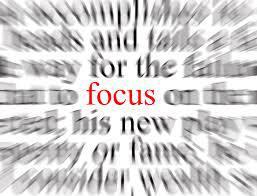 Coming up with real break-through ideas is not easy and will require some training and experience. However, the trickiest part of an idea generation session is in its first phase: defining the focus. Defining the thinking task is the first task you should undertake when you are trying something like a “20 Minutes Idea Boost”.
Coming up with real break-through ideas is not easy and will require some training and experience. However, the trickiest part of an idea generation session is in its first phase: defining the focus. Defining the thinking task is the first task you should undertake when you are trying something like a “20 Minutes Idea Boost”.
Defining the Focus
Often teams tend to skip this phase. They assume that the thinking task before them is clear.This is not the best approach since. . .
- the current definition of the challenge or problem could be hindering the search for a solution
- there may be unchecked different perceptions between the participants about what the problem or challenge is
- the thinking task could be far too broad or abstract to get concrete ideas
Defining the wrong focus can sometimes result in great ideas, but the ideas may not be of the kind that you actually looking for – they do not solve your specific problem. You can also end up with simply poor ideas.
Example: We need ideas to deal with the shortage of maths teachers. The problem here is that teachers in maths are not well paid. Solution: raise they salary for maths teachers. . .
To arrive at a focus shift you could use creative thinking techniques as cause-effect or foreground-background reversals, change of system levels or any other thinking strategy.
Redefine the focus at infinity
To lessen the risk of being trapped in an obvious definition of the thinking goal – and getting obvious ideas – it helps to redefine the thinking challenge in at least 20 ways, connecting them with the statement: the problem here is. . . and. . . and. . . also. . . and not to forget. . .
Example: The problem with the shortage of maths teachers is that there are too few teachers leaving schools and also that maths teachers do have too many other tasks besides their teaching, and the problem is that the time in the class is not efficient used, and not to forget there is far too little PC aided support, and the problem is that far too much children have to learn math, and also the classes are far too big and there are too few teachers in maths because their education is too long, to elaborated. too. . . and so on. . .
Define selection criteria
Setting criteria against ideas at the end of a session are a very useful way to reflect on possible outcomes. It will prevent ” drifting”, that is coming up with wild and great ideas that are not relevant for this particular thinking task. Another advantage to setting criteria before actual generating ideas is that it prevents a certain bias against crazy ideas, i.e. ideas that are not well-suited for overcoming the challenge.
Example: a good idea will increase the available maths teachers with at least 20 %, a good idea will reduce the amount of students that get no maths teaching with 80 % at least. A good idea will not cost more than the salaries of maths teachers we don’t have at the pay this year.
In Innovation – Selecting Ideas we wrote about the importance of setting criteria for what should be regarded as a good idea. This should be done before you start to generate ideas.
Make it sexy
The thinking task should be formulated in a way that is as challenging, far-reaching, provoking, imaginative and energetic as possible. The classical IWWMW – In What Ways Might We – is not real inviting, neither does ” We need ideas to improve…” ignites any real enthusiasm
Example: . At least every child in secondary school should have 100 hrs maths a year by a qualified teacher. The amount of students that will have maths education will not exceed the available maths teachers. How to make rock-stars of maths teachers within two years?
Make it formal
When you have finally found a promising thinking task, write it down:
- the subject: about what we are going to think
- the goal of objective: what should be reached after the thinking session: a solution, an idea, an approach, a decision, etc
- selection criteria for assessing ideas
- the sexy question
Time spent a meticulous formulating the thinking task will reward you with hopefully better ideas in less time. And all ideas will land exactly where you were aiming at. You will hit the bulls-eye – every time! Why does it work? It works because you have a clear view of the dart board.

